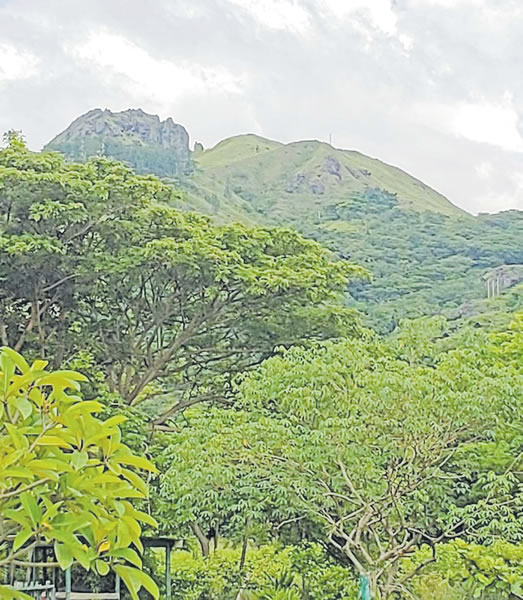Famous park indefinitely closed
The news of the indefinite closure of the sleeping giant was a disappointment for many indigenous, local visitors and foreign nature lovers since this destination was a treasure house for indigenous plants of Fiji with a collection of spectacular orchids.
It has up to 30-40 varieties of wonderful Asian orchids and hybrids of Cattleya.
COVID-19 initially suspended its activities and later closing it indefinitely.
The Garden of the Sleeping Giant used to provide tourists with the most beautiful and peaceful experience.
This stunning landscaped garden was a top attraction and showed the best in horticulture.
This article highlights the characteristics and history of famous attractions such as the Garden of Sleeping Giant and the efforts of Fiji to protect a national heritage.
Origin and rejuvenating attraction
This landscaped garden possesses a large variety of Fiji’s native plants that is situated in an ideal location between Nadi and Lautoka.
This also includes a jungle walk for the visitors who pass through big lily pond.
The park was established about 1977 by the late Raymond Burr (American actor), of Perry Mason and Ironsides fame, who was the original owner.
This was his own collection and later that collection was open to the public. This was basically his private collection of tropical orchids and gradually it attracted numerous visitors.
The garden consists of more than 2000 variety of orchids spread more than 50 acres.
This is believed to the one of the world’s largest orchid collection. The popularity of this garden is because of its orchid collection, lush green lawns, beautiful lily ponds, fountains and dense rainforest.
The breathtaking beauty displayed by a variety of flowers mesmerised every tourist.
Its’ not all.
One could enjoy the scenery of the incredible mountain valley from this fantastic garden. Fantastic florals were the centre of attraction.
It has a walkway to stroll with leisure alone with family or friends and people of all ages.
It rejuvenates the mind and body after watching these flowers.
Conserving forest and sanctuary
Fiji is the South Pacific leader to raise the issue of climatic change, urge world leaders to reduce carbon emission, raise its concerns about rising sea levels and global warming.
It has been always conserving its forest reserves.
Fiji has three institutions that safeguard Fijian heritage assets Department of Heritage and Arts, the Fiji Museum and the National Trust of Fiji.
Fiji has been a frontrunner in conserving its wildlife sanctuaries, forest reserves i.e. Yadua Taba Wildlife Sanctuary (natural heritage) and Waisali Forest Reserve (national heritage).
Besides this Fiji has been thriving to conserve the environment and promote sustainable tourism.
The archipelago has a series of attractive eco-tourism parks that not just conserve nature, but also provide support to the community such as the Abaca Ecotourism project and Bouma National Heritage park.
Conservation of the natural reserves has been a prime objective of Fiji that makes a meaningful impact in the South Pacific.
Conclusion
Fiji is continuing its unwavering battle against the climatic challenges and thriving towards achieving sustainable development goals such as climatic action, Life Below Water and Life on Land.
Under this vision, the Garden of Sleeping Giant is an effort to conserve greenery in its own efforts.
Every nature lover will pray this indefinite closing of sleeping giant may be suspended and the park may come in operation again.
* Dr Sakul Kundra is an acting HOD Department of Social Science and assistant professor in history at Fiji National University. The views expressed are his own and not of this newspaper or his employer. For comments or suggestions, email. dr.sakulkundra@gmail.com



